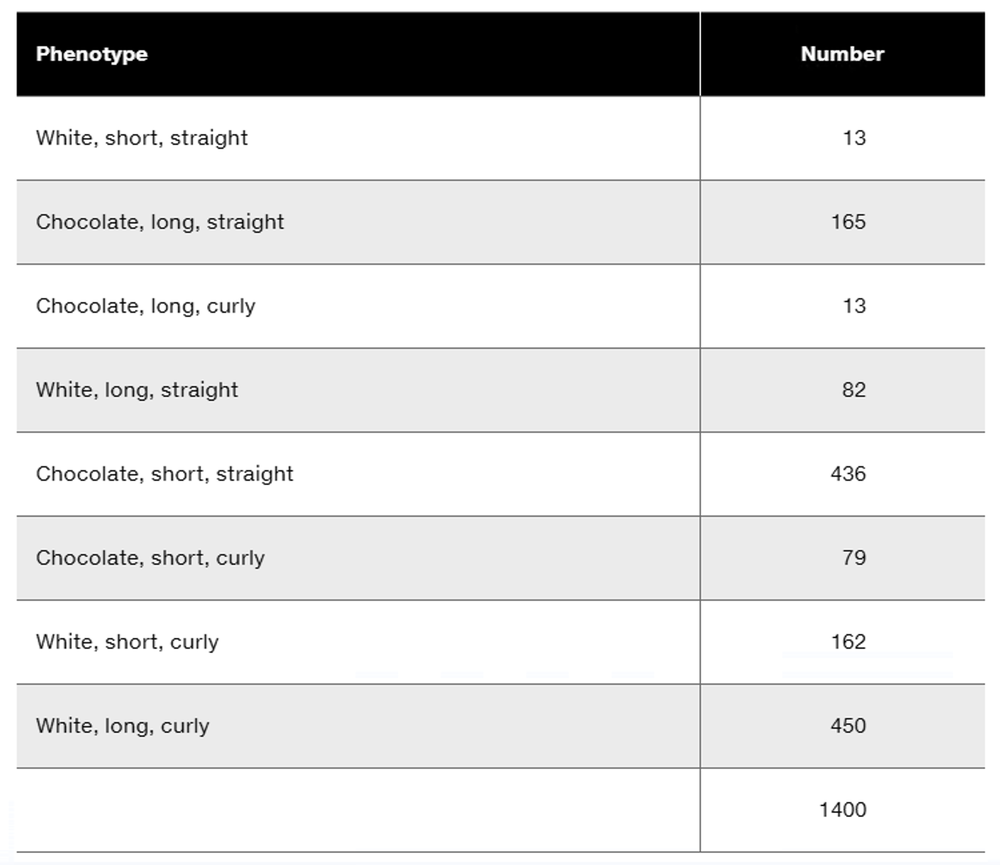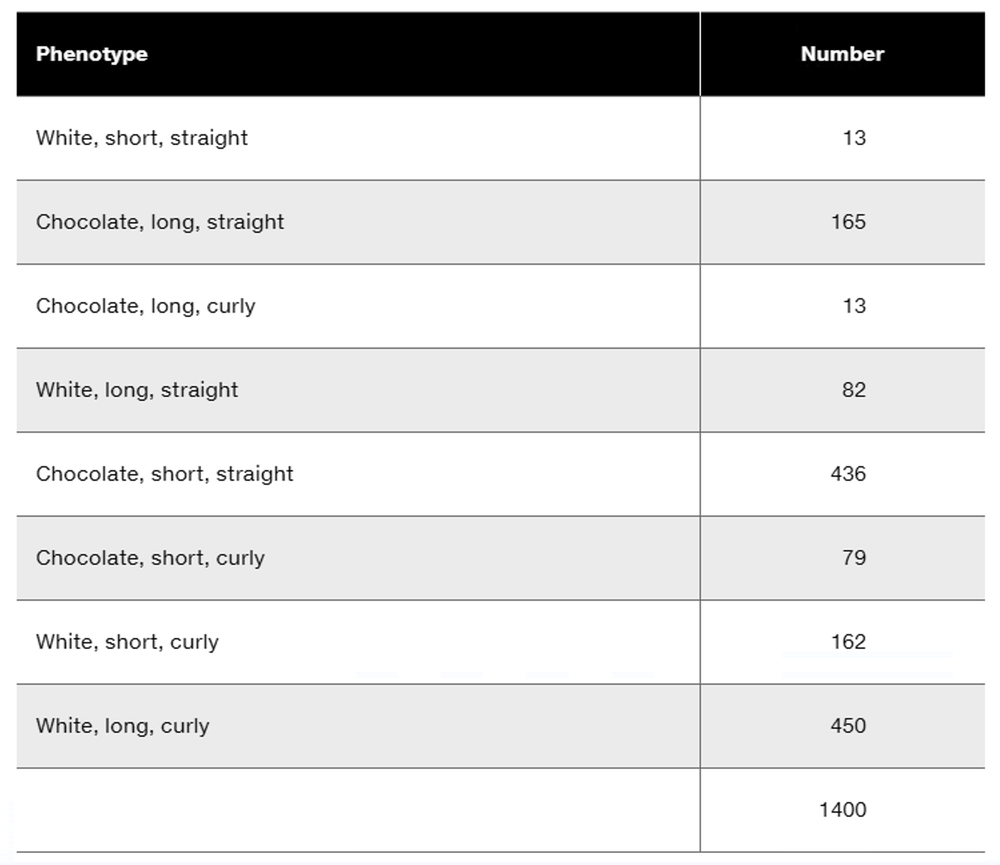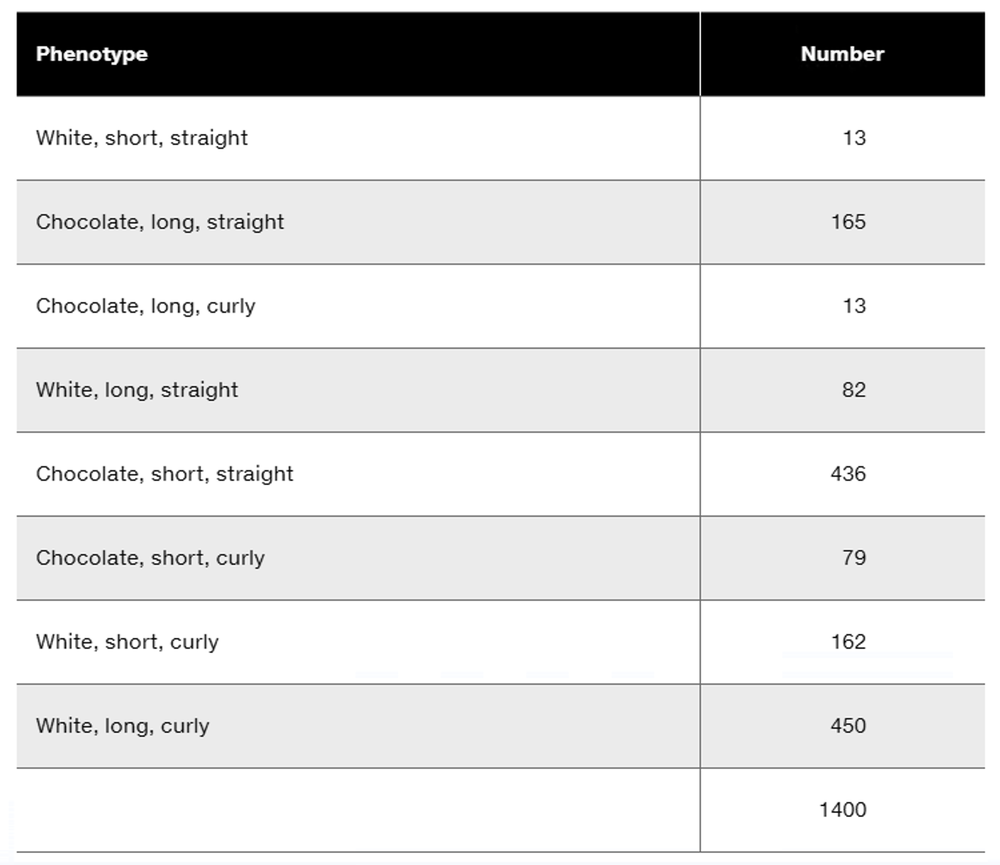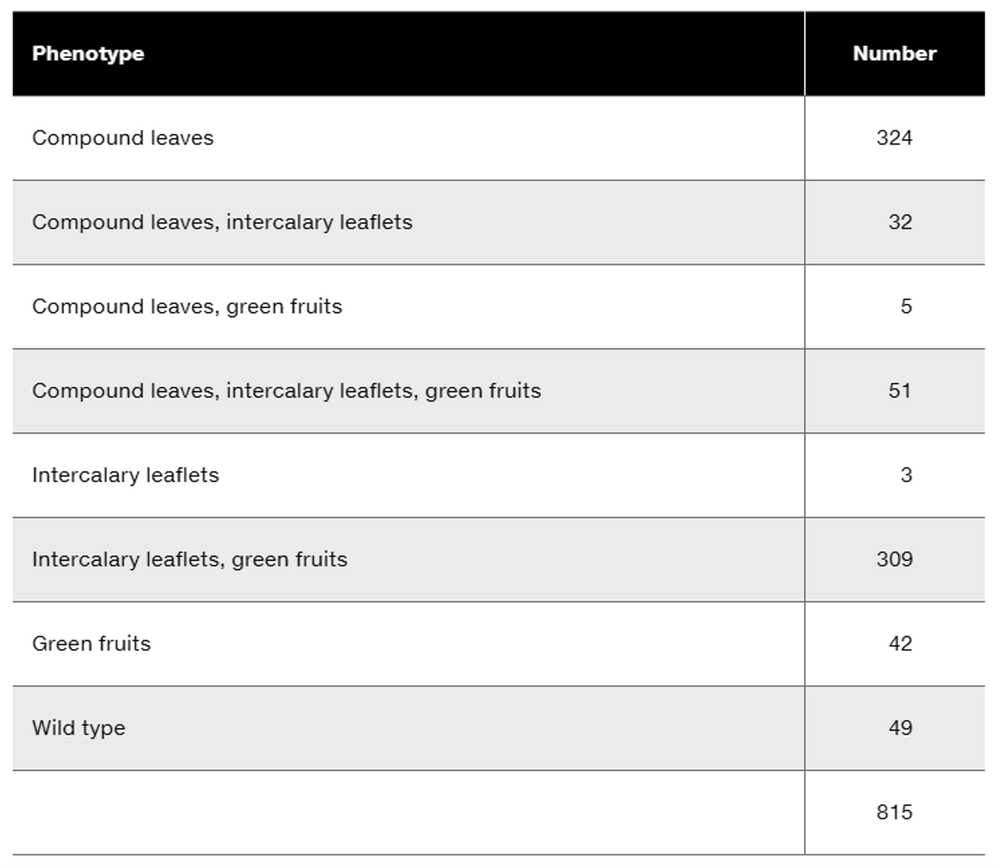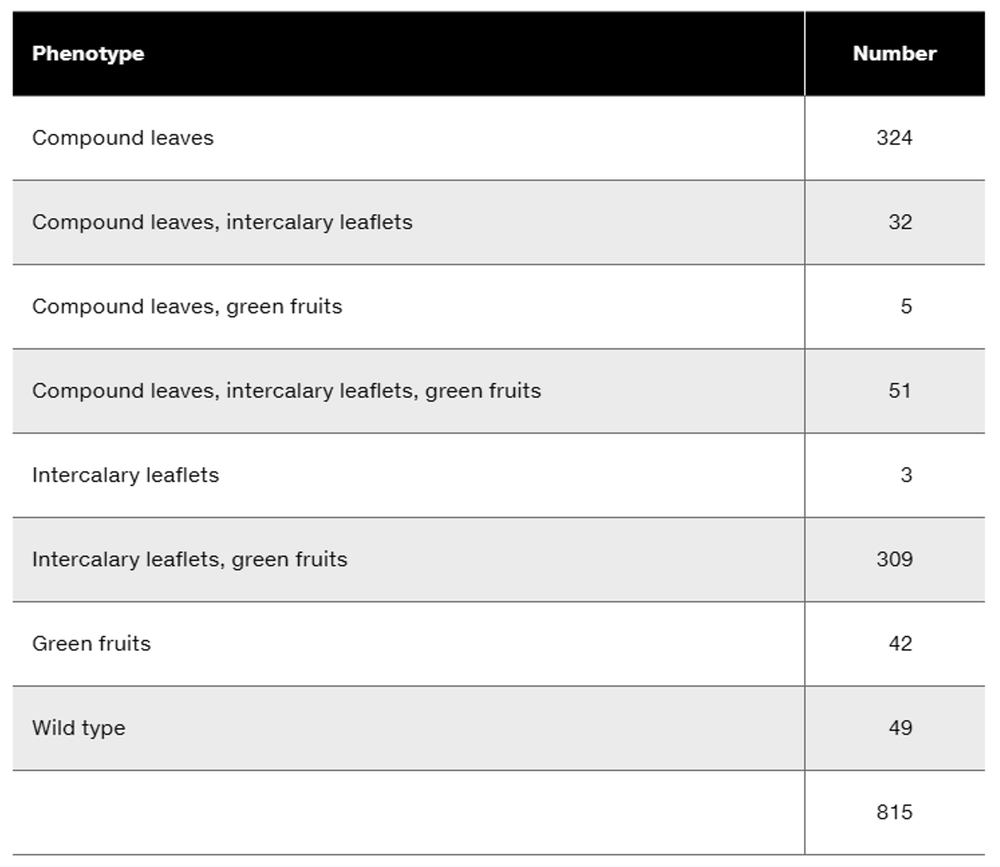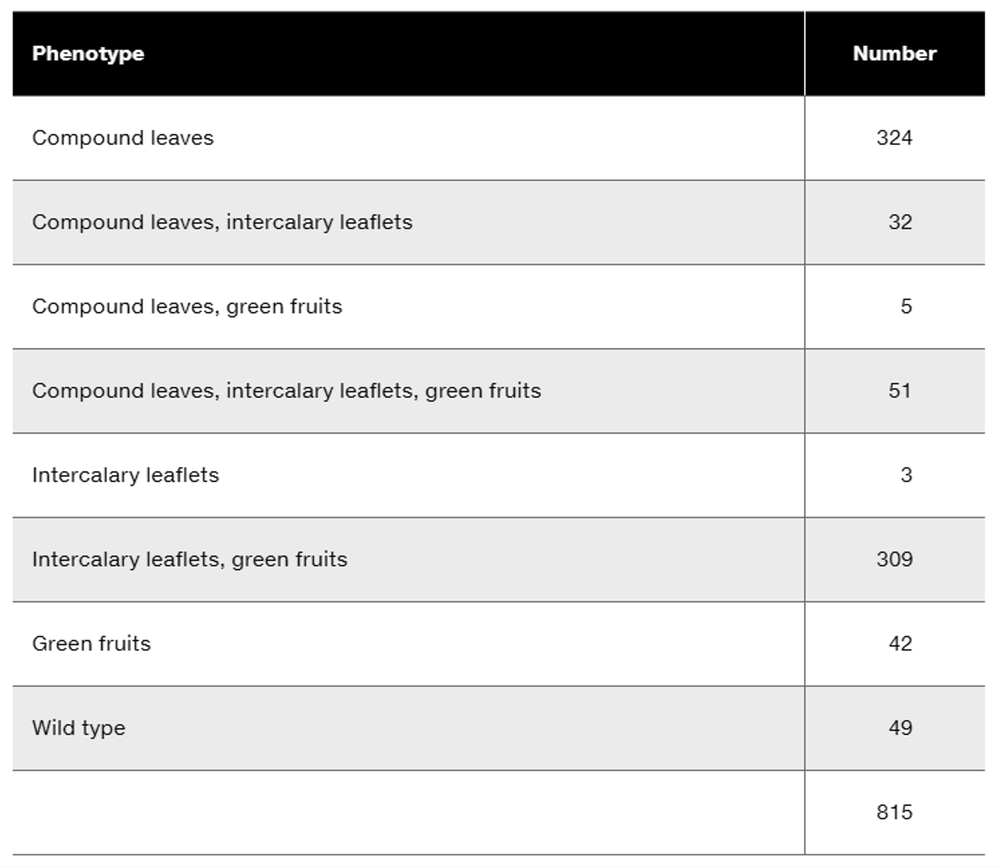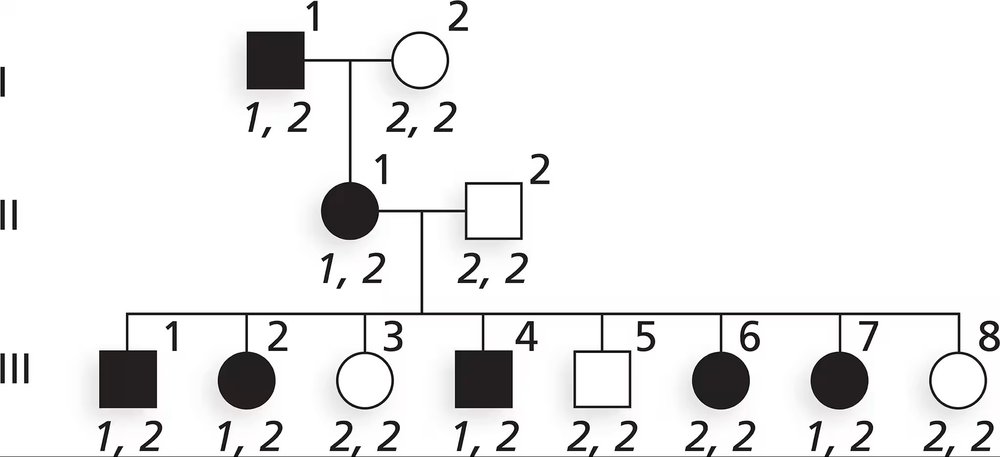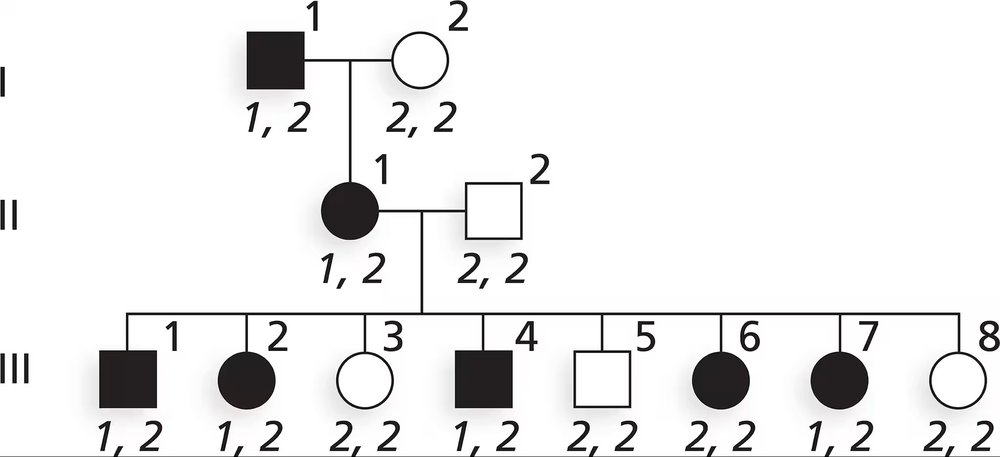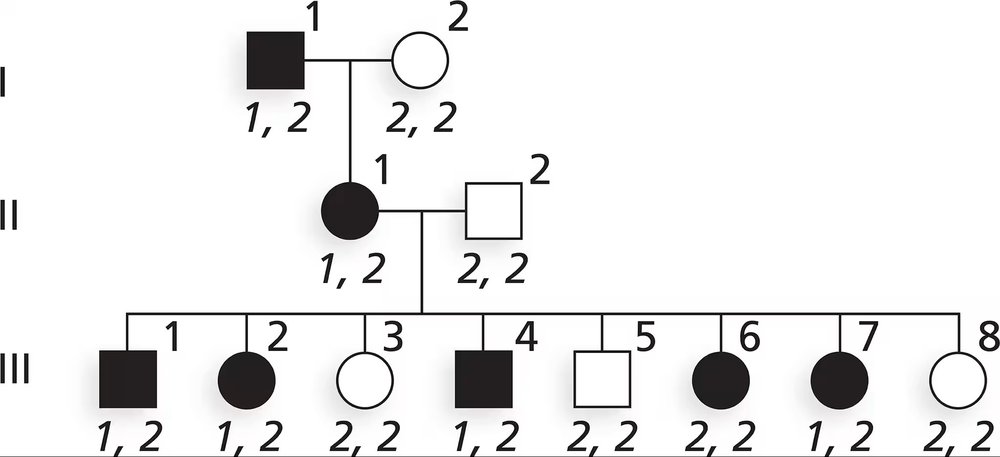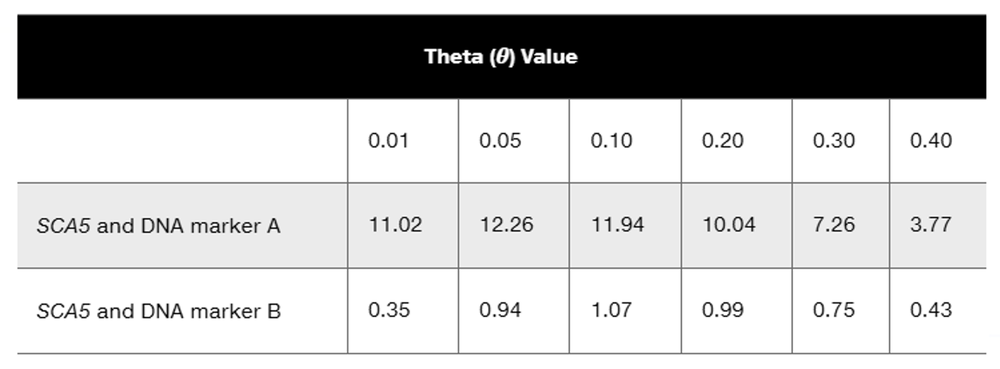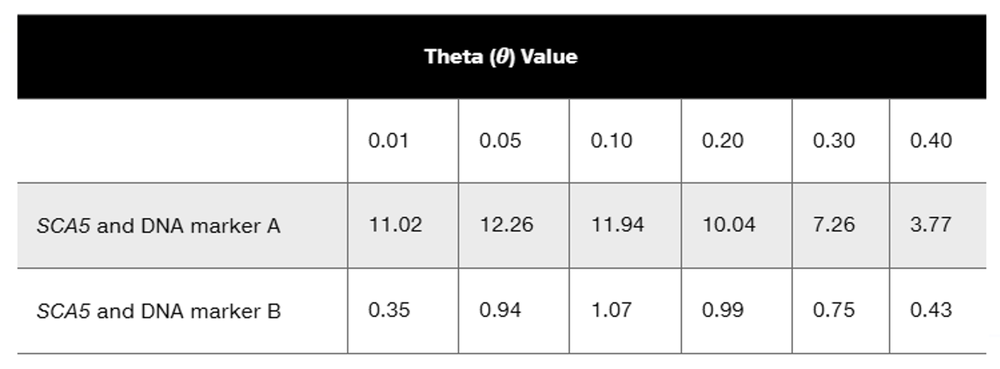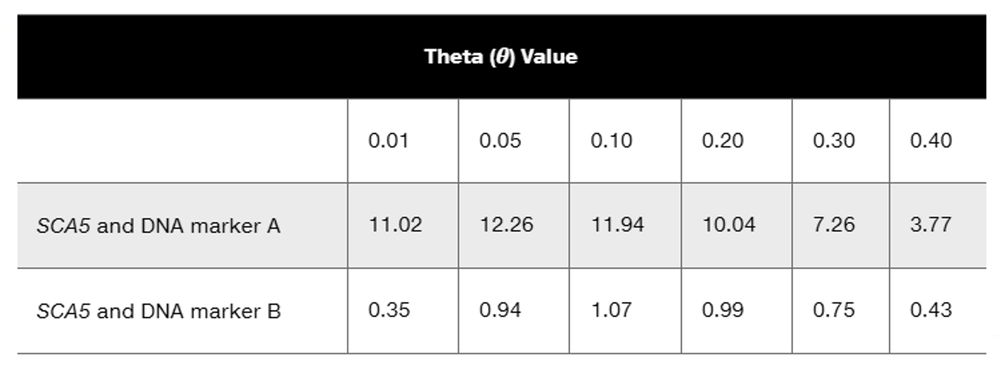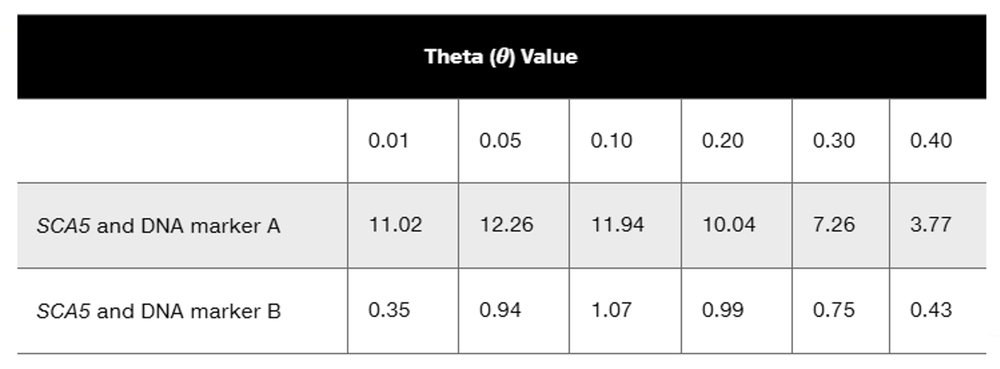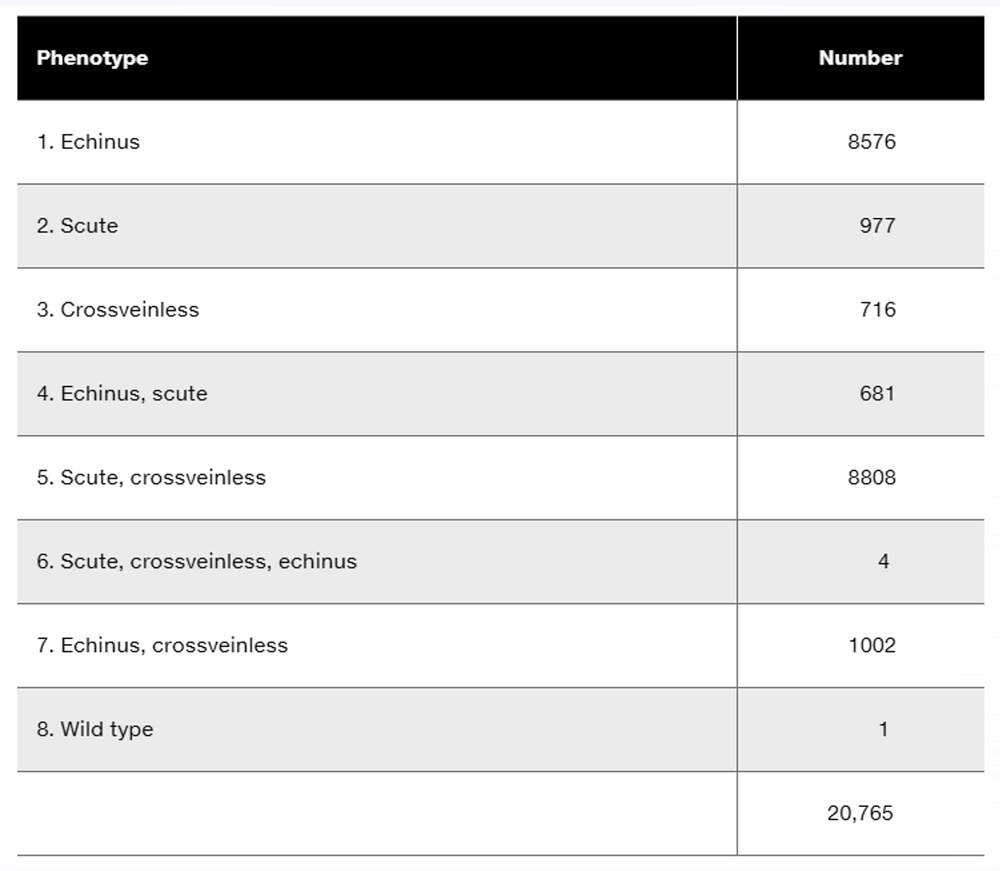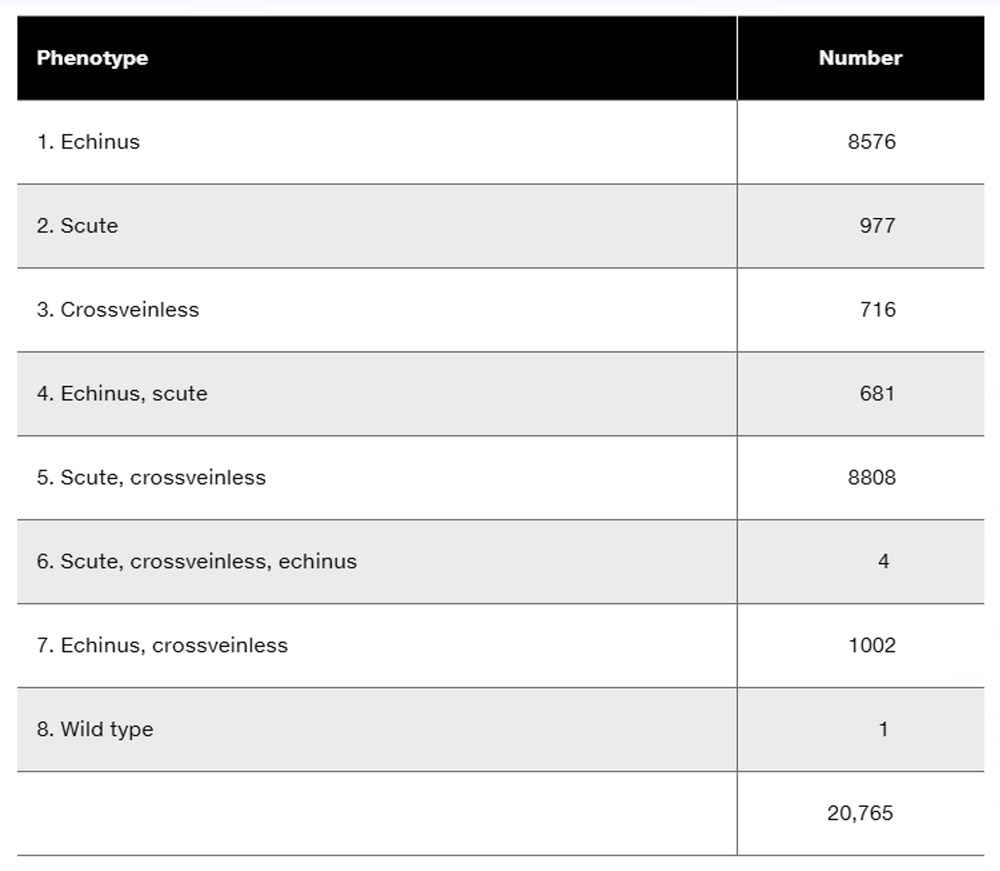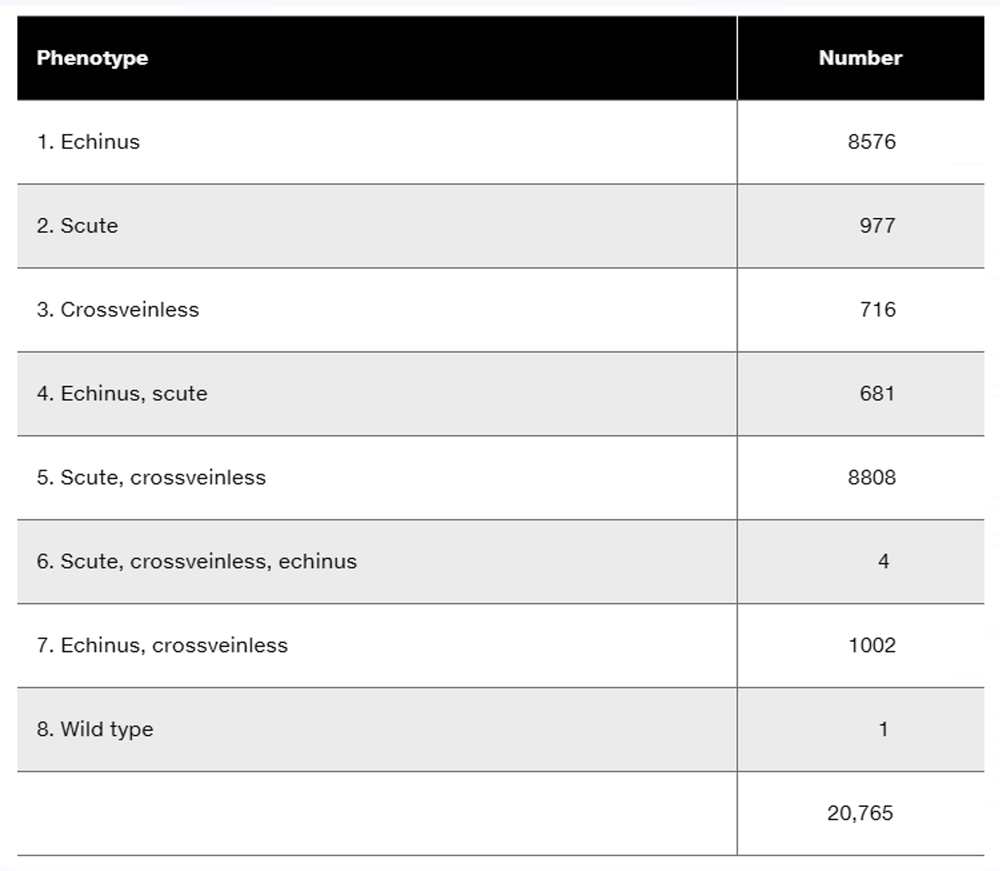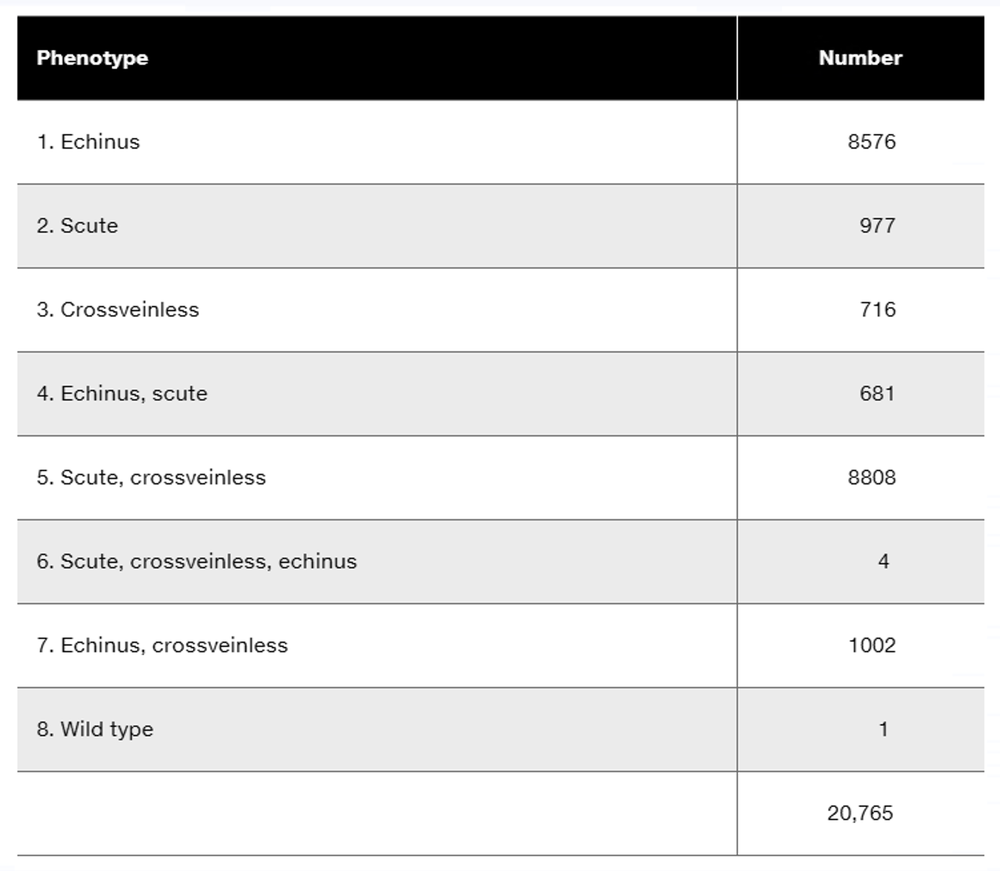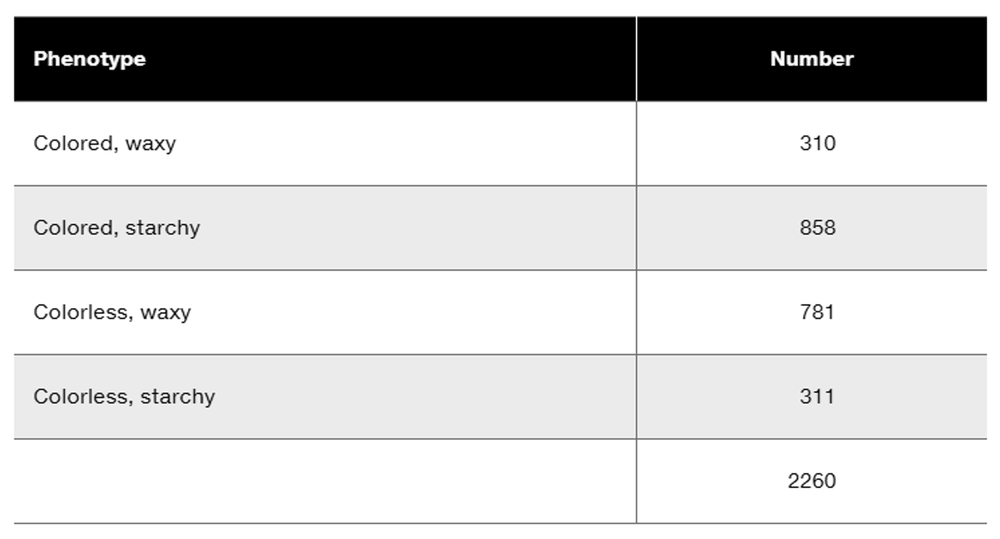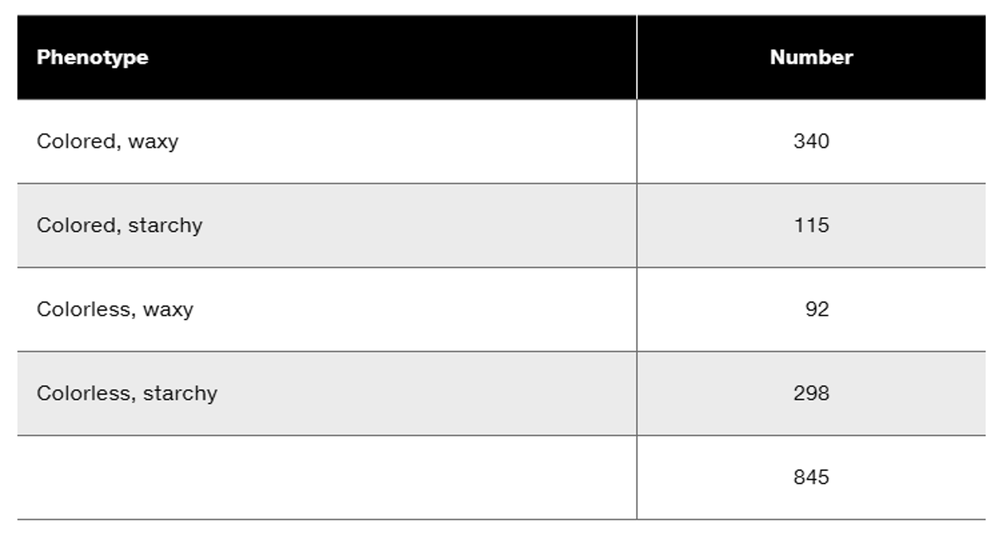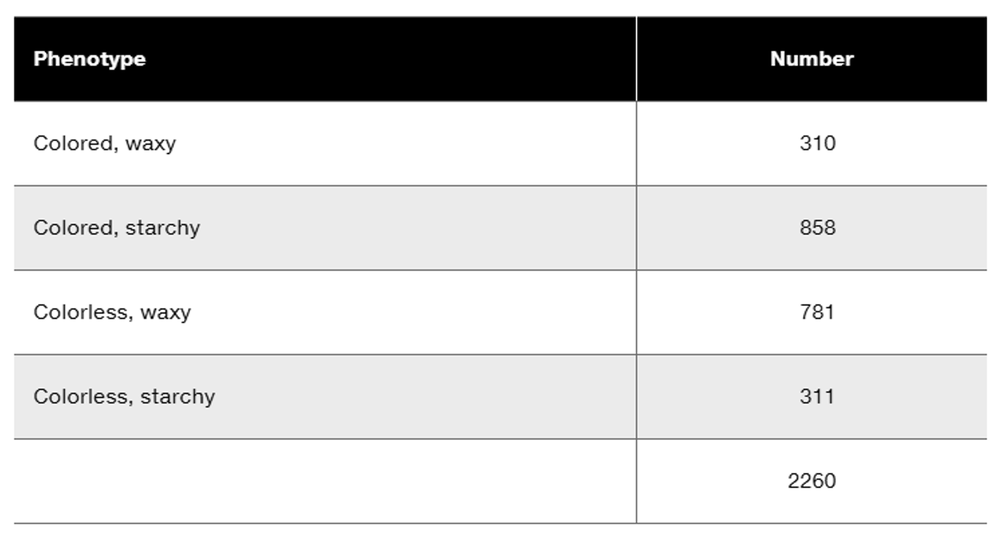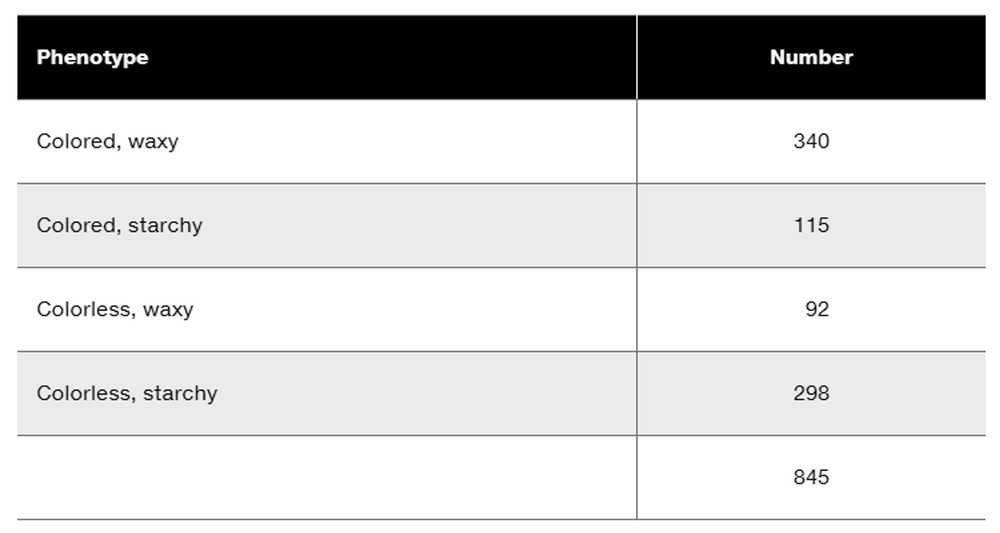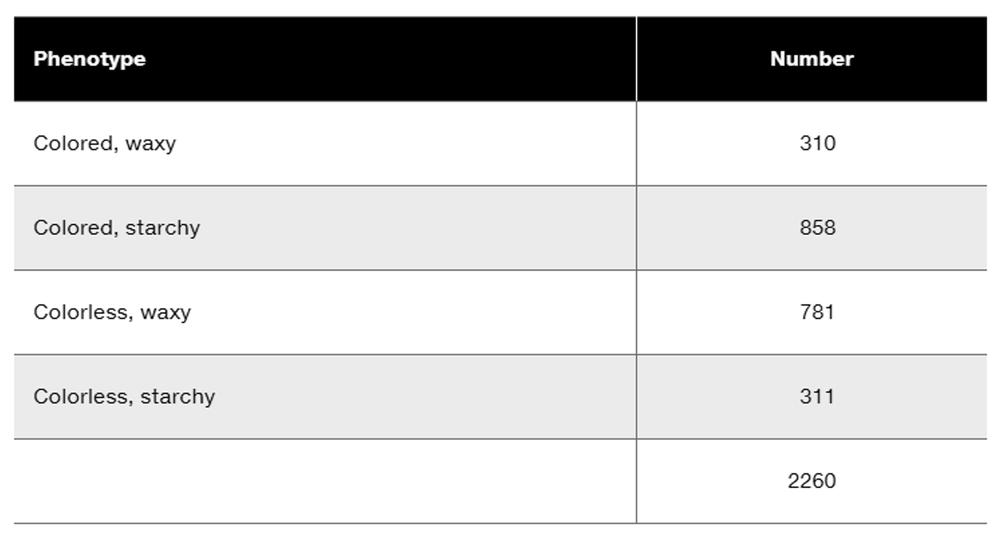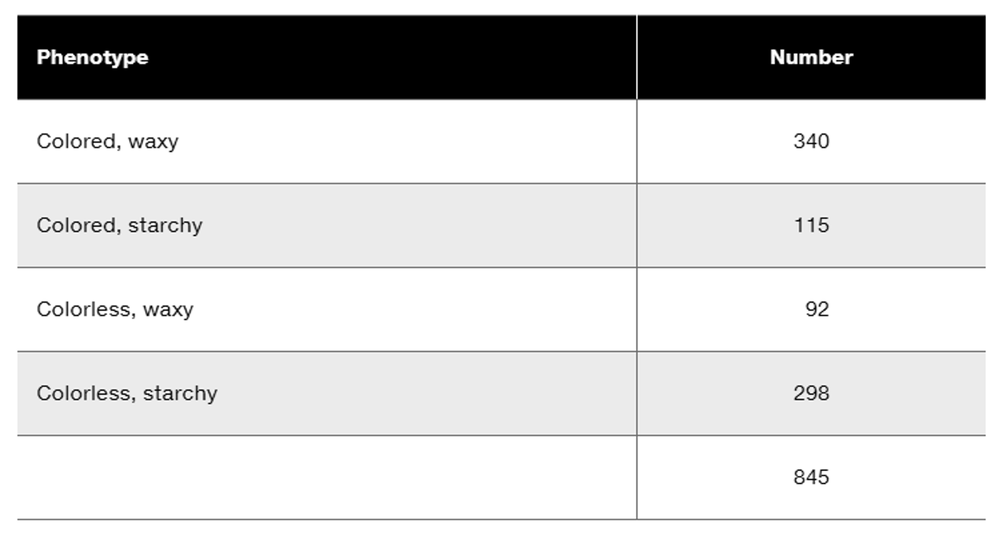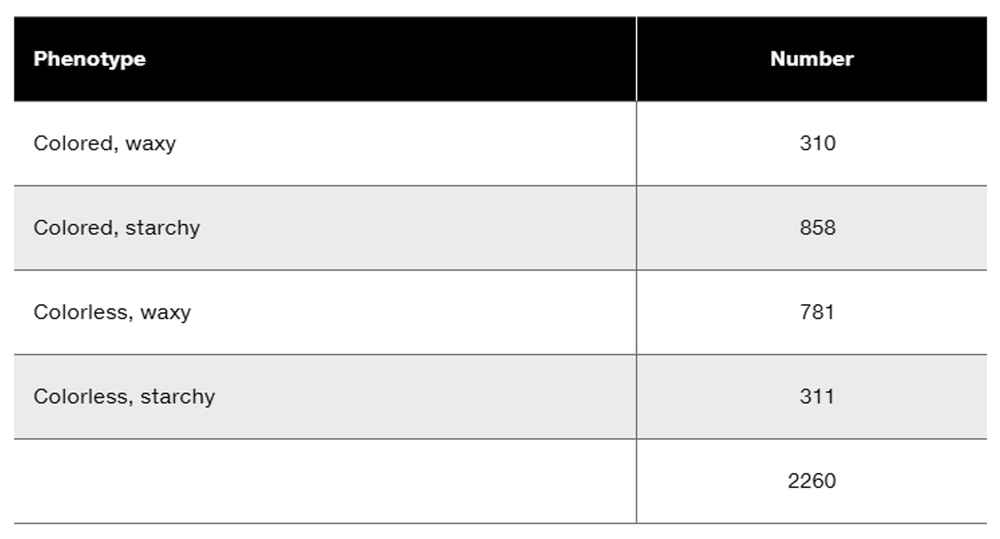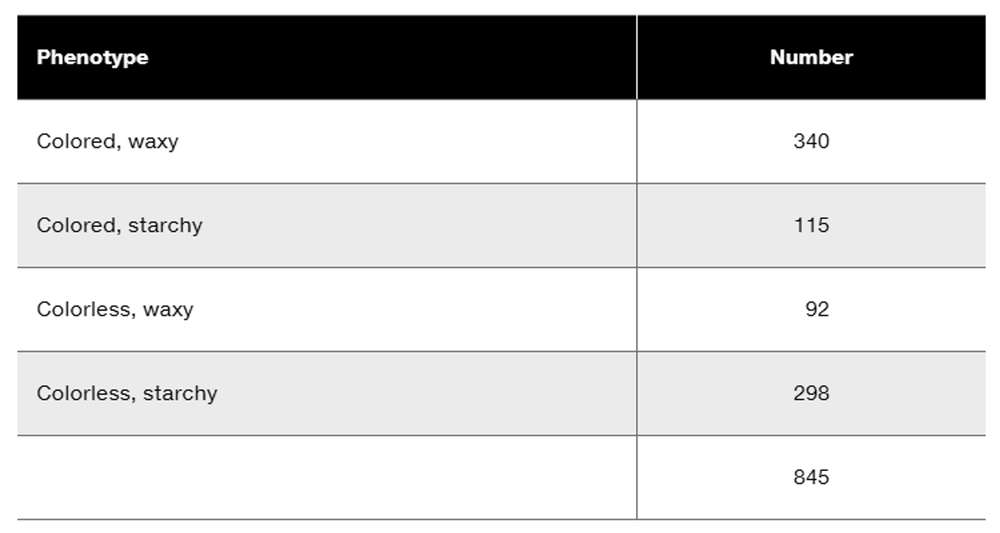 Back
BackProblem 24b
The boss in your laboratory has just heard of a proposal by another laboratory that genes for eye color and the length of body bristles may be linked in Drosophila. Your lab has numerous pure-breeding stocks of Drosophila that could be used to verify or refute genetic linkage. In Drosophila, red eyes (c⁺) are dominant to brown eyes (c) and long bristles (d⁺) are dominant to short bristles (d). Your lab boss asks you to design an experiment to test the genetic linkage of eye color and bristle-length genes, and to begin by crossing a pure-breeding line homozygous for red eyes and short bristles to a pure-breeding line that has brown eyes and long bristles.
In your experimental design, what are the genotype and phenotype of the line you propose to cross to the F₁ to obtain the most useful information about genetic linkage between the eye color and bristle-length genes? Explain why you make this choice.
Problem 24c
The boss in your laboratory has just heard of a proposal by another laboratory that genes for eye color and the length of body bristles may be linked in Drosophila. Your lab has numerous pure-breeding stocks of Drosophila that could be used to verify or refute genetic linkage. In Drosophila, red eyes (c⁺) are dominant to brown eyes (c) and long bristles (d⁺) are dominant to short bristles (d). Your lab boss asks you to design an experiment to test the genetic linkage of eye color and bristle-length genes, and to begin by crossing a pure-breeding line homozygous for red eyes and short bristles to a pure-breeding line that has brown eyes and long bristles.
Assume the eye color and bristle-length genes are separated by 28 m.u. What are the approximate frequencies of phenotypes expected from the cross you proposed in part (b)?
Problem 24d
The boss in your laboratory has just heard of a proposal by another laboratory that genes for eye color and the length of body bristles may be linked in Drosophila. Your lab has numerous pure-breeding stocks of Drosophila that could be used to verify or refute genetic linkage. In Drosophila, red eyes (c⁺) are dominant to brown eyes (c) and long bristles (d⁺) are dominant to short bristles (d). Your lab boss asks you to design an experiment to test the genetic linkage of eye color and bristle-length genes, and to begin by crossing a pure-breeding line homozygous for red eyes and short bristles to a pure-breeding line that has brown eyes and long bristles.
How would the results of the cross differ if the genes are not linked?
Problem 25a
In rabbits, chocolate-colored fur (w⁺) is dominant to white fur (w), straight fur (c⁺) is dominant to curly fur (c), and long ear (s⁺) is dominant to short ear (s). The cross of a trihybrid rabbit with straight, chocolate-colored fur and long ears to a rabbit that has white, curly fur and short ears produces the following results:
Determine the order of the genes on the chromosome, and identify the alleles that are present on each of the homologous chromosomes in the trihybrid rabbits.
Problem 25b
In rabbits, chocolate-colored fur (w⁺) is dominant to white fur (w), straight fur (c⁺) is dominant to curly fur (c), and long ear (s⁺) is dominant to short ear (s). The cross of a trihybrid rabbit with straight, chocolate-colored fur and long ears to a rabbit that has white, curly fur and short ears produces the following results:
Calculate the recombination frequencies between each of the adjacent pairs of genes.
Problem 25c
In rabbits, chocolate-colored fur (w⁺) is dominant to white fur (w), straight fur (c⁺) is dominant to curly fur (c), and long ear (s⁺) is dominant to short ear (s). The cross of a trihybrid rabbit with straight, chocolate-colored fur and long ears to a rabbit that has white, curly fur and short ears produces the following results:
Determine the interference value for this cross.
Problem 26a
The following progeny are obtained from a test cross of a trihybrid wild-type plant to a plant with the recessive phenotypes compound leaves (c), intercalary leaflets (i), and green fruits (g). (Traits not listed are wild type.) The test-cross progeny are as follows:
Determine the order of the three genes, and construct a genetic map that identifies the correct order and the alleles carried on each chromosome in the trihybrid parental plant.
Problem 26b
The following progeny are obtained from a test cross of a trihybrid wild-type plant to a plant with the recessive phenotypes compound leaves (c), intercalary leaflets (i), and green fruits (g). (Traits not listed are wild type.) The test-cross progeny are as follows:
Calculate the frequencies of recombination between the adjacent genes in the map.
Problem 26c
The following progeny are obtained from a test cross of a trihybrid wild-type plant to a plant with the recessive phenotypes compound leaves (c), intercalary leaflets (i), and green fruits (g). (Traits not listed are wild type.) The test-cross progeny are as follows:
How many double-crossover progeny are expected among the test-cross progeny? Calculate the interference for this cross.
Problem 27a
In tomatoes, the allele T for tall plant height is dominant to dwarf allele t, the P allele for smooth skin is dominant to the p allele for peach fuzz skin, and the allele R for round fruit is dominant to the recessive r allele for oblong fruit. The genes controlling these traits are linked on chromosome 1 in the tomato genome, and the genes are arranged in the order and with the recombination frequencies shown.

A pure-breeding tall, peach fuzz, round plant is crossed to a pure-breeding plant that is dwarf, smooth, oblong. What are the gamete genotypes produced by each of these plants?
Problem 27b
In tomatoes, the allele T for tall plant height is dominant to dwarf allele t, the P allele for smooth skin is dominant to the p allele for peach fuzz skin, and the allele R for round fruit is dominant to the recessive r allele for oblong fruit. The genes controlling these traits are linked on chromosome 1 in the tomato genome, and the genes are arranged in the order and with the recombination frequencies shown.
What are the genotype and phenotype of the F₁ progeny of this cross?
Problem 27c
In tomatoes, the allele T for tall plant height is dominant to dwarf allele t, the P allele for smooth skin is dominant to the p allele for peach fuzz skin, and the allele R for round fruit is dominant to the recessive r allele for oblong fruit. The genes controlling these traits are linked on chromosome 1 in the tomato genome, and the genes are arranged in the order and with the recombination frequencies shown.
What are the genotypes of gametes produced by the F₁, and what is the predicted frequency of each gamete?
Problem 27d
In tomatoes, the allele T for tall plant height is dominant to dwarf allele t, the P allele for smooth skin is dominant to the p allele for peach fuzz skin, and the allele R for round fruit is dominant to the recessive r allele for oblong fruit. The genes controlling these traits are linked on chromosome 1 in the tomato genome, and the genes are arranged in the order and with the recombination frequencies shown.
The F₁ are test-crossed to dwarf, peach fuzz, oblong plants, and 1000 test-cross progeny are produced. What are the phenotypes of test-cross progeny, and what number of progeny is expected in each class?
Problem 28a
Neurofibromatosis 1 (NF1) is an autosomal dominant disorder inherited on human chromosome 17. Part of the analysis mapping the NF1 gene to chromosome 17 came from genetic linkage studies testing segregation of NF1 and DNA genetic markers on various chromosomes. A DNA marker with two alleles, designated 1 and 2, is linked to NF1. The pedigree below shows segregation of NF1 (darkened symbols) and gives genotypes for the DNA marker for each family member.
Determine the alleles for the NF1 gene and the DNA marker gene on each chromosome carried by the four family members in generation I and generation II. Use N for the dominant NF1 allele and n for the recessive allele and assume I-1 is heterozygous for the disease allele (Nn).
Problem 28b
Neurofibromatosis 1 (NF1) is an autosomal dominant disorder inherited on human chromosome 17. Part of the analysis mapping the NF1 gene to chromosome 17 came from genetic linkage studies testing segregation of NF1 and DNA genetic markers on various chromosomes. A DNA marker with two alleles, designated 1 and 2, is linked to NF1. The pedigree below shows segregation of NF1 (darkened symbols) and gives genotypes for the DNA marker for each family member.
Based on the phase of alleles on chromosomes in generation II, is there any evidence of recombination among the eight offspring in generation III? Explain.
Problem 28c
Neurofibromatosis 1 (NF1) is an autosomal dominant disorder inherited on human chromosome 17. Part of the analysis mapping the NF1 gene to chromosome 17 came from genetic linkage studies testing segregation of NF1 and DNA genetic markers on various chromosomes. A DNA marker with two alleles, designated 1 and 2, is linked to NF1. The pedigree below shows segregation of NF1 (darkened symbols) and gives genotypes for the DNA marker for each family member.
What is the estimated recombination frequency between the NF1 gene and the DNA marker?
Problem 29a
A 2006 genetic study of a large American family (Ikeda et al., 2006) identified genetic linkage between DNA markers on chromosome 11 and the gene producing the autosomal dominant neuromuscular disorder spinocerebellar ataxia type 5 (SCA5). The following lod score data are taken from the 2006 study:
Does either group of lod scores indicate statistically significant odds in favor of genetic linkage? Explain your answer.
Problem 29b
A 2006 genetic study of a large American family (Ikeda et al., 2006) identified genetic linkage between DNA markers on chromosome 11 and the gene producing the autosomal dominant neuromuscular disorder spinocerebellar ataxia type 5 (SCA5). The following lod score data are taken from the 2006 study:
What is the maximum value for each set of lod scores?
Problem 29c
A 2006 genetic study of a large American family (Ikeda et al., 2006) identified genetic linkage between DNA markers on chromosome 11 and the gene producing the autosomal dominant neuromuscular disorder spinocerebellar ataxia type 5 (SCA5). The following lod score data are taken from the 2006 study:
Based on the available information, is DNA marker A linked to the gene producing SCA5? Explain your answer.
Problem 29d
A 2006 genetic study of a large American family (Ikeda et al., 2006) identified genetic linkage between DNA markers on chromosome 11 and the gene producing the autosomal dominant neuromuscular disorder spinocerebellar ataxia type 5 (SCA5). The following lod score data are taken from the 2006 study:
Based on available information, is DNA marker B linked to the gene for SCA5? Explain your answer.
Problem 30a
A Drosophila experiment examining potential genetic linkage of X-linked genes studies a recessive eye mutant (echinus), a recessive wing-vein mutation (crossveinless), and a recessive bristle mutation (scute). The wild-type phenotypes are dominant. Trihybrid wild-type females (all have the same genotype) are crossed to hemizygous males displaying the three recessive phenotypes. Among the 20,765 progeny produced from these crosses are the phenotypes and numbers listed in the table. Any phenotype not given is wild type.
Determine the gene order and identify the alleles on the homologous X chromosomes in the trihybrid females.
Problem 30b
A Drosophila experiment examining potential genetic linkage of X-linked genes studies a recessive eye mutant (echinus), a recessive wing-vein mutation (crossveinless), and a recessive bristle mutation (scute). The wild-type phenotypes are dominant. Trihybrid wild-type females (all have the same genotype) are crossed to hemizygous males displaying the three recessive phenotypes. Among the 20,765 progeny produced from these crosses are the phenotypes and numbers listed in the table. Any phenotype not given is wild type.
Calculate the recombination frequencies between each of the gene pairs.
Problem 30c
A Drosophila experiment examining potential genetic linkage of X-linked genes studies a recessive eye mutant (echinus), a recessive wing-vein mutation (crossveinless), and a recessive bristle mutation (scute). The wild-type phenotypes are dominant. Trihybrid wild-type females (all have the same genotype) are crossed to hemizygous males displaying the three recessive phenotypes. Among the 20,765 progeny produced from these crosses are the phenotypes and numbers listed in the table. Any phenotype not given is wild type.
Compare the recombination frequencies and speculate about the source of any apparent discrepancies in the recombination data.
Problem 30d
A Drosophila experiment examining potential genetic linkage of X-linked genes studies a recessive eye mutant (echinus), a recessive wing-vein mutation (crossveinless), and a recessive bristle mutation (scute). The wild-type phenotypes are dominant. Trihybrid wild-type females (all have the same genotype) are crossed to hemizygous males displaying the three recessive phenotypes. Among the 20,765 progeny produced from these crosses are the phenotypes and numbers listed in the table. Any phenotype not given is wild type.
Use chi-square analysis to demonstrate that the data in this experiment are not the result of independent assortment.
Problem 31a
A genetic study of an early onset form of heart disease identifies 10 families containing members with the condition. No clear dominant or recessive pattern of inheritance is evident, but an analysis of SNP markers for five families detects a strong association with a marker on chromosome 12, and genetic linkage analysis for the marker produces a lod score of 2.2.
What do the association and lod score results suggest about this genetic marker?
Problem 31b
A genetic study of an early onset form of heart disease identifies 10 families containing members with the condition. No clear dominant or recessive pattern of inheritance is evident, but an analysis of SNP markers for five families detects a strong association with a marker on chromosome 12, and genetic linkage analysis for the marker produces a lod score of 2.2.
What next step do you recommend for this genetic analysis?
Problem 32a
In experiments published in 1918 that sought to verify and expand the genetic linkage and recombination theory proposed by Morgan, Thomas Bregger studied potential genetic linkage in corn (Zea mays) for genes controlling kernel color (colored is dominant to colorless) and starch content (starchy is dominant to waxy). Bregger performed two crosses. In Cross 1, pure-breeding colored, starchy-kernel plants (C1 Wx/C1 Wx) were crossed to plants pure-breeding for colorless, waxy kernels (c1 wx/c1 wx). The F₁ of this cross were test-crossed to colorless, waxy plants. The test-cross progeny were as follows:
In Cross 2, plants pure-breeding for colored, waxy kernels (C1 wx/C1 wx) and colorless, starchy kernels (c1 Wx/c1 Wx) were mated, and their F₁ were test-crossed to colorless, waxy plants. The test-cross progeny were as follows:
For each set of test-cross progeny, determine whether genetic linkage or independent assortment is more strongly supported by the data. Explain the rationale for your answer.
Problem 32b
In experiments published in 1918 that sought to verify and expand the genetic linkage and recombination theory proposed by Morgan, Thomas Bregger studied potential genetic linkage in corn (Zea mays) for genes controlling kernel color (colored is dominant to colorless) and starch content (starchy is dominant to waxy). Bregger performed two crosses. In Cross 1, pure-breeding colored, starchy-kernel plants (C1 Wx/C1 Wx) were crossed to plants pure-breeding for colorless, waxy kernels (c1 wx/c1 wx). The F₁ of this cross were test-crossed to colorless, waxy plants. The test-cross progeny were as follows:
In Cross 2, plants pure-breeding for colored, waxy kernels (C1 wx/C1 wx) and colorless, starchy kernels (c1 Wx/c1 Wx) were mated, and their F₁ were test-crossed to colorless, waxy plants. The test-cross progeny were as follows:
Calculate the recombination frequency for each of the progeny groups.
Problem 32c
In experiments published in 1918 that sought to verify and expand the genetic linkage and recombination theory proposed by Morgan, Thomas Bregger studied potential genetic linkage in corn (Zea mays) for genes controlling kernel color (colored is dominant to colorless) and starch content (starchy is dominant to waxy). Bregger performed two crosses. In Cross 1, pure-breeding colored, starchy-kernel plants (C1 Wx/C1 Wx) were crossed to plants pure-breeding for colorless, waxy kernels (c1 wx/c1 wx). The F₁ of this cross were test-crossed to colorless, waxy plants. The test-cross progeny were as follows:
In Cross 2, plants pure-breeding for colored, waxy kernels (C1 wx/C1 wx) and colorless, starchy kernels (c1 Wx/c1 Wx) were mated, and their F₁ were test-crossed to colorless, waxy plants. The test-cross progeny were as follows:
Taken together, are the results of these two experiments compatible with the hypothesis of genetic linkage? Explain why or why not.
Problem 32d
In experiments published in 1918 that sought to verify and expand the genetic linkage and recombination theory proposed by Morgan, Thomas Bregger studied potential genetic linkage in corn (Zea mays) for genes controlling kernel color (colored is dominant to colorless) and starch content (starchy is dominant to waxy). Bregger performed two crosses. In Cross 1, pure-breeding colored, starchy-kernel plants (C1 Wx/C1 Wx) were crossed to plants pure-breeding for colorless, waxy kernels (c1 wx/c1 wx). The F₁ of this cross were test-crossed to colorless, waxy plants. The test-cross progeny were as follows:
In Cross 2, plants pure-breeding for colored, waxy kernels (C1 wx/C1 wx) and colorless, starchy kernels (c1 Wx/c1 Wx) were mated, and their F₁ were test-crossed to colorless, waxy plants. The test-cross progeny were as follows:
Merge the two sets of progeny data and determine the combined recombination frequency.

